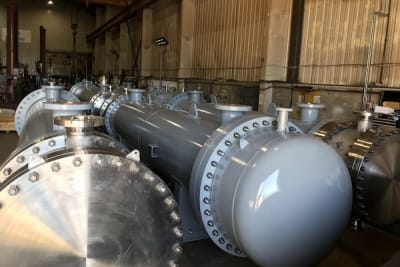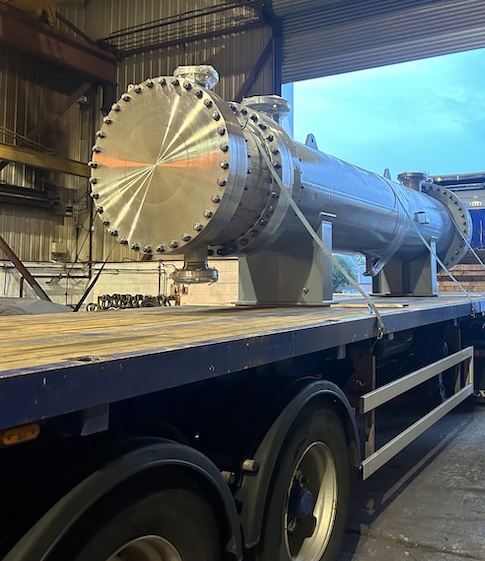Design and Manufacture of 5 Super Duplex Shell and Tube Heat Exchangers
Location: Iraq

Challenge
Glacier Energy’s client had a requirement for 5 super duplex shell and tube heat exchangers to be designed and manufactured in accordance with ASME VIII Div I & fully ASME U Stamp certified. The new heat exchangers were required for integration into a new refinery for cooling natural gas following compression. Glacier Energy were responsible for the complete manufacture of the units from thermal design, manufacture to delivery.
The customer required material that could withstand the service conditions but also be serviceable and replaceable. Glacier Energy’s biggest challenge was utilising an expansion-based design instead of tube end welding to allow the tubes to be replaced, which is considered difficult to achieve due to the hardness of the super duplex.
Solutions
To tackle the challenge of the super duplex hardening through expansion, the team engaged with experts as well as utilising our in-house equipment. An expander which operated at a higher RPM and expanded faster compared to other standard equipment was used and reduced the effect of the hardening material. The team also utilised a portable compressor which provided the expander with additional capacity and volume to allow a higher torque. We also had special tooling made to withstand the forces.

Extensive standards were adhered to throughout including ASME U Stamp and extensive client specifications from a blue-chip giant, with specifications from design and procurement (PMI, ferrite contents) requirements to specification standard coating requirements. Glacier Energy ensured compliance with ASME U Stamp throughout by being focused on the continual improvement from the authorised Inspector and continually referred to the Glacier Energy ASME manual throughout the process. This provides guidance and step by step instructions on how to perform tasks and was approved as part of the initial ASME accreditation process.
Benefits
- By using expansion-based design, this offered benefits such as tube pulling and replacement during maintenance therefore extending the longevity of the heat exchangers
- Super duplex is resistant to corrosion reducing both potential downtime and scheduled maintenance or replacement
- Expanded tubes were selected as opposed to welded tubes as they can be removed, meaning any failures are not detrimental to the performance with the opportunity for individual tubes to be replaced.
- Glacier Energy maintained high standards throughout and worked in accordance with ASME U Stamp, an accreditation which is not held by many UK manufacturers.

